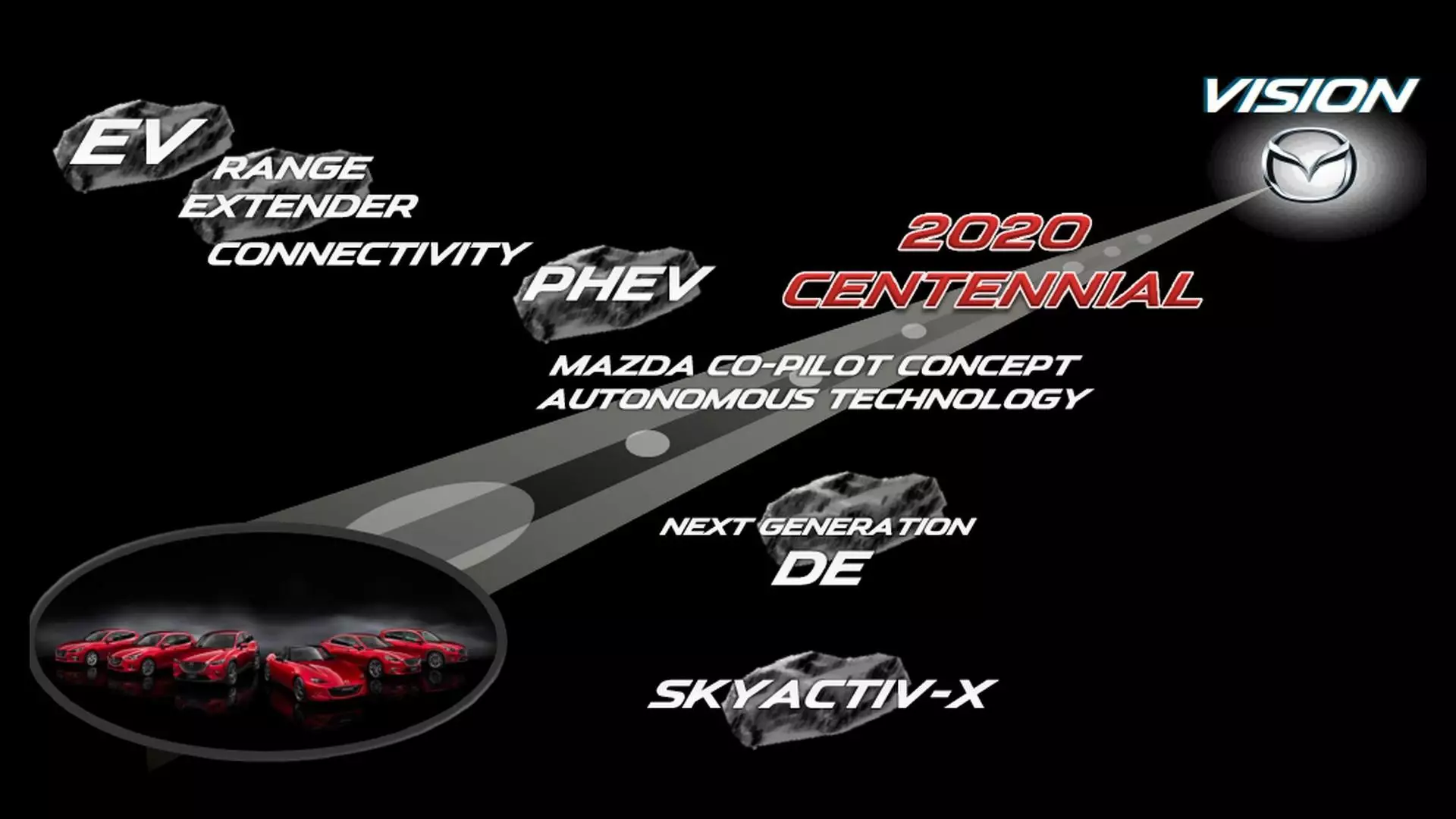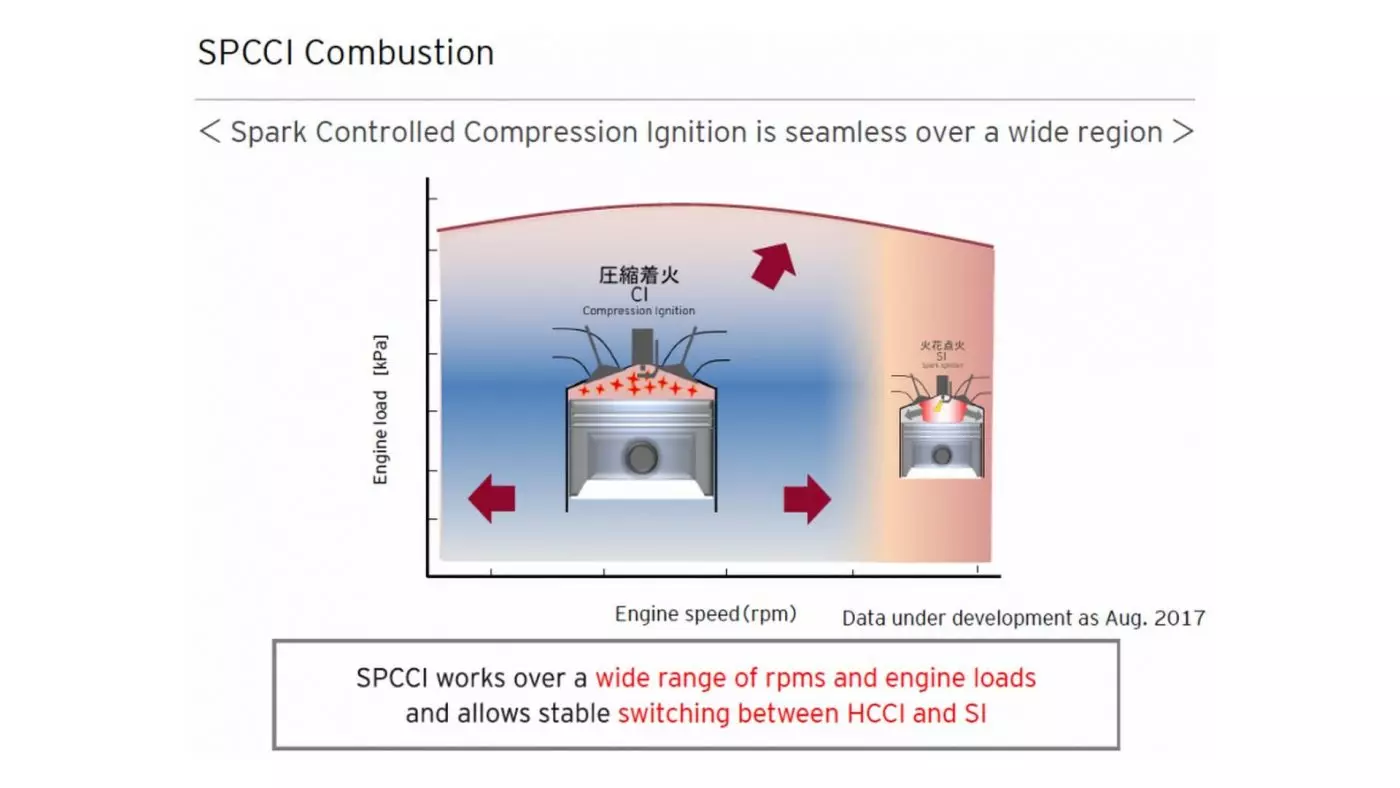“Electric cars aren't the only answer,” said Robert Davis, Mazda Senior Vice President at a recent seminar. “We need to work on the best solution for consumers and the environment on a common goal and not an instruction manual on how to get there,” he continued.
Davis thus criticized the state support given to electric vehicles, either through generous tax incentives or through the obligation to have 100% electric vehicles in certain markets, such as California.
It is not the role of states and regulators to provide technological responses, but rather to define goals. Considering the European political bet on Diesel to reduce CO2 emissions over the last two decades and the results it has given, the words of Robert Davis must be heard.
“Before we devote time, effort and costs to electrification, we are convinced that a solid internal combustion engine is crucial,” he concluded.
So what's the solution?

No. Mazda has not closed the door on electrics and hybrids. Like other manufacturers, Mazda is also heading in that direction. A testament to this was the deepening of relations with Toyota in the development of electrified and 100% electric powertrains. As an example, Mazda's first electric will appear in 2019.
But until electrics are ready to take center stage in the automotive industry – both in terms of the technology/cost ratio and commercially – it will be the “old” internal combustion engine that the industry will depend on to meet environmental goals. And despite the combustion engine's more than 100 years of life, there is still room for improvement.
Mazda has already demonstrated this once with first-generation SKYACTIV engines. They ignored industry trends, remaining naturally aspirated and without reducing volume, saying “no” to the infamous downsizing – see article here. The record-breaking compression ratio (14:1) of these Mazda gasoline engines allowed clear results that weren't limited to theory.
Now Mazda has announced that it is possible to do even better. The second generation of SKYACTIV gasoline engines announce efficiency gains of 20 to 30%, placing them on the same level as diesel engines.
SKYACTIV-X, petrol as efficient as diesel
How is it possible for a gasoline engine to be as efficient as a diesel? The solution boils down to four letters: HCCI , which means compression ignition with homogeneous charge. In short, this technology allows a gasoline engine to ignite at a later time, when the spark plugs just trigger a chain reaction and in a more homogeneous way. Like a Diesel, due to the high compression ratio, the pressure in the mixture is such that it triggers its ignition.
Mazda isn't the first to try. Daimler and GM have tried it in the past, but it never got past the “lab” stage. The "small" Mazda will be the first manufacturer to put this technology in a production car, in 2019. The brand decided to call it SKYACTIV-X.
The difference to other engines that have experienced compression ignition is that the SKYACTIV-X retains the spark plugs. That is, the engine will transition between the two ignition methods, choosing the most appropriate depending on needs. Hence the name of the system: SCCI or Spark Controlled Compression Ignition.
In other words, at low loads the ignition will be carried out by compression, just like a Diesel, and at high loads it will be carried out by spark plugs. Such a system allows to raise the current SKYACTIV's record compression ratio from 14:1 to a phenomenal 18:1. The SKYACTIV-X, according to Mazda, allows you to have the best of both worlds.
Kiyoshi Fujiwara, Executive Director at MazdaThis very lean air-fuel mixture which is too lean for combustion by spark ignition, through this method can burn cleanly and quickly. It allows for better thermal efficiency, superior fuel economy and reduced emissions of nitrogen oxides (NOx).
If so far Mazda has resisted supercharging – not counting the Diesels, only the 2.5 of the CX-9 uses a turbo -, the SKYACTIV-X, on the other hand, will be supercharged by default. In addition to ignition compression, the SKYACTIV-X will have a compressor to aid in the mission to increase fuel economy. The Japanese brand promises a more available engine, with a smooth transition between the two ignition methods, with torque values between 10 and 30% higher than current SKYACTIV-G.

Sustainable Zoom-Zoom 2030
SKYACTIV-X is the highlight of the brand's latest sustainability plan, which will define the long-term technological development of the brand. Among the objectives in this plan are the general reduction of well-to-wheel CO2 emissions by around 50% by 2030 and 90% by 2050, compared to 2010.
Regarding security, we will see the i-ACTIVSENSE technology set being extended to more models. Mazda will also adopt the technologies for autonomous vehicles – Mazda Co-Pilot Concept -, wanting these to become standard, in all its models, from 2025. The objective is to progressively eliminate car accidents.
